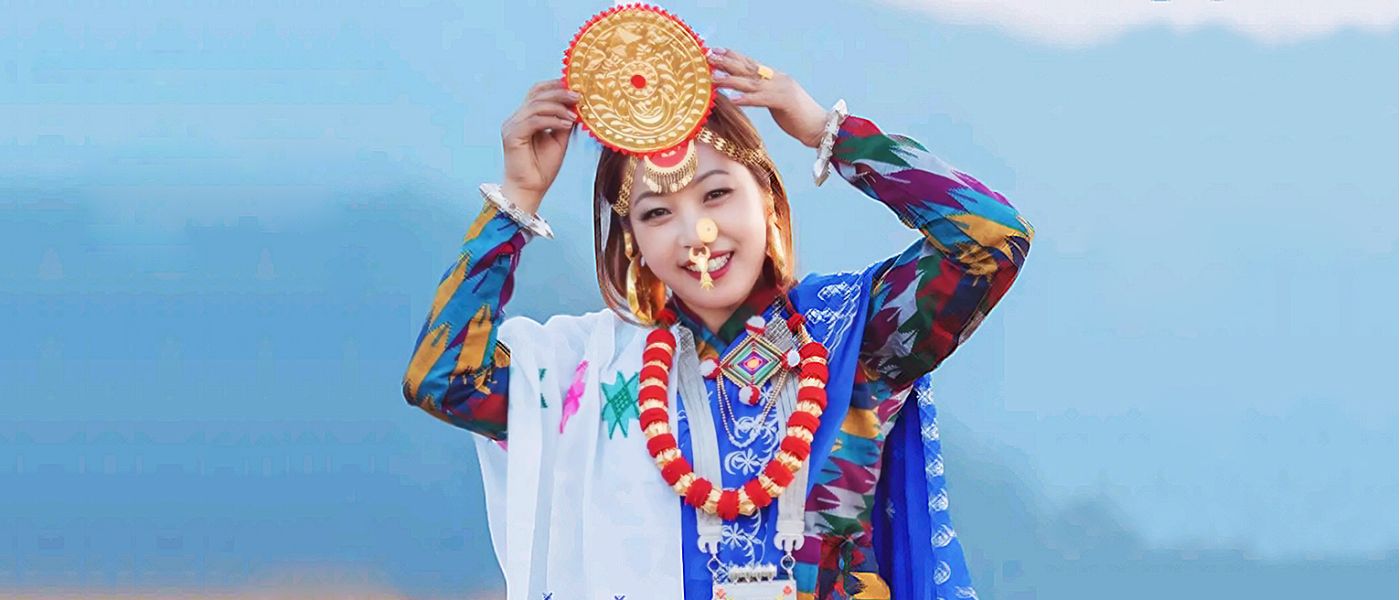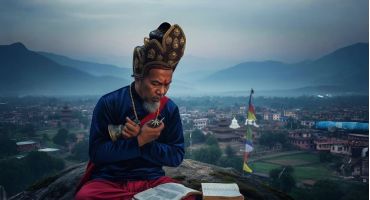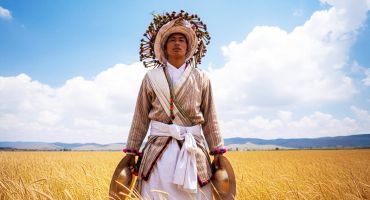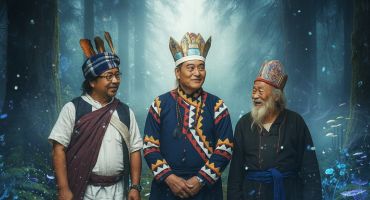Cultural festivals provide one of the few consistently affirming opportunities for indigenous communities in the Himalayas to strengthen and assert a more constructive self-image, both across generations and in the pursuit of their identity as a distinct culture. For the Limbus, the harvest festival of Chasok Tangnam serves a similar purpose. It represents both a profound connection between nature and spirituality and also acts as a protector of their rich cultural heritage. Rooted in the Mundhum (the oral scripture and traditional philosophy) Chasok Tangnam is a celebration of gratitude and ecological reverence.
Chasok Tangnam is celebrated during the Udhauli season, which typically occurs in late autumn, in either November or December. This season marks the time of harvest when crops such as millet, rice, and buckwheat are gathered, aligning with the natural cycle of crop maturity. The festival thus coincides with a time of abundance and gratitude reflecting the agrarian values of the Limbu ancestors. The ritual of seeking permission from ancestors or nature to partake in the newly harvested crops is called ‘Chasok,’ whereas ‘Tangnam‘ translates to festival or celebration.

As an indigenous community of the Eastern Himalayas, the Limbu have long relied on farming as their primary means of livelihood. The Mundhum narrates the shift from a foraging to an agricultural society, facilitated by divine intervention.
In ancient times, during the era of Sawa Yethang, the earliest human ancestors relied on gathering wild fruits, roots, and tubers for survival. This fragile way of life eventually led to health problems, prompting them to seek divine intervention. Tagera Ningwaphuma, the creator of the world, answered their prayers by imparting the knowledge of agriculture. Sibera/Sikera Yakthungma, a wise and visionary woman, became a central figure in this transformative period. She cleared the land with wooden tools, sowed seeds, and guided the community in the practice of farming. The fertile plains along the Tamor River, now known as Nembo Yakwa Tesuma in Taplejung, are celebrated as the birthplace of this agricultural transformation. Following the first harvest, Sikera Yakthungma urged the people to offer a portion of their crops to nature and their ancestral spirits as an expression of gratitude, marking the origin of the Chasok Tangnam tradition.
These narratives, though mythological, display the socio-historical development of the Limbu community. The roots of the festival lie in the ancient practice of Nwagi, the ritual of offering newly harvested crops to deities and ancestors before human consumption. Over time, this practice evolved into the collective celebration of Chasok Tangnam. The practices and metaphors that weave the life cycle of crops into cosmic, human, and social dynamics reveal how a community harmonizes applied knowledge, symbols, and rituals into an evolving cycle of meaning. This cycle adapts over time and grounds essential processes within the realms of physical life, the household, the village, and the Limbu spirit pantheon.
Today, Chasok Tangnam is a multifaceted celebration that integrates spiritual rituals, communal gatherings, and cultural performances. The festival typically coincides with the harvest season, aligning with the natural cycle of crop maturity. The rituals are performed by Devari, Mangdemba, Fedangmas, and Yebas/Yemas (Limbu shamans), who act as intermediaries between the physical and spiritual realms.

Unlike many other communities, the Limbus do not directly embed farming practices into rigid religious symbols. Instead, they root these practices in tangible elements, such as crops, which are central to both practical and symbolic operations. In the context of Chasok Tangnam, this adaptability is evident in how harvested crops serve as offerings to nature and ancestral spirits, symbolizing gratitude and the cyclical harmony of life. Even as cultural and social landscapes shift, the flexible symbolism of plants and natural elements ensures that their relevance endures. Local knowledge about grains and other resources operates subtly behind these rituals, allowing traditions like Chasok Tangnam to continuously evolve while preserving their essence.
When crops like maize, millet, and rice mature, the household’s primary woman meticulously harvests the rice and millet ears. The rice is threshed, roasted, and processed into flattened rice (chura), while the millet is hand-husked, and its husks are combined with chili and water to brew Jaad Saaptok, a ritual millet beer.
A stalk of Malingo (Himalayacalamus asper) is planted in the ground, and a Muthareko Dhungro (hollowed bamboo vessel), approximately 5–6 inches long, is prepared. This vessel is filled with Saaptok and placed at the top of the Malingo. Waso Phungwet/Chindo (dried bottle gourd) or a brass pot is filled with Dawakama Wadumpakwa (pure water) for libations on the shrine. The ritual space is established by leveling the ground and laying out banana leaves to create a long ceremonial area. Altars dedicated to Yuma Sammang and Theba Sammang, the primordial ancestors, are arranged, with offerings placed on plates. A lit lamp serves as the final touch to complete the sacred setup.

The ritual honors several deities and divine spirits from the Limbu pantheon.
Misekpa: The first deity worshiped to ensure that the ritual proceeds without any obstructions or mishaps.
Kuikudap or Taphemba: A hunting divine spirit that ensures no obstacles in the household life.
Thungdangba: The Sun deity, worshiped to ensure favorable weather for crops.
Seebera/Sikera Yakthungma: A maiden who, having helped with the first seed sowing and ensured crop growth, is worshiped for support and life-giving assistance.
Kapobba Him Sammang: A deity who protects the home, often seen as a guardian ancestor.
Kashihangma: A female companion deity of Yuma Sammang.
Yuma Sammang: The supreme goddess of the Yakthung Limbu people, embodying the power of maternal strength, closely linked to the creation deity Tagera Ningwaphuma.
Theba Sammang: The male counterpart deity of Yuma Sammang, representing paternal strength and the ancestral male deity of the Limbu people.
The centerpiece of Chasok Tangnam is the Nwagi ritual, in which newly harvested crops are offered to Tagera Ningwaphuma, the ancestors (Samjik), and nature spirits. The offerings usually include millet, rice, and seasonal produce, symbolizing the community’s gratitude for a bountiful harvest. The rituals are held at sacred sites like Mangkhims (ancestral worship places) and natural landmarks such as rivers, caves, and ridges, believed to be inhabited by the spirits of ancestors and deities. The shamans invoke the spirits using traditional chants and rituals found in the Mundhum. Sacred drums (Tangsing) and other ritual tools are used to establish a spiritual connection.
Traditional Limbu dances, like the Dhan Nach, are an integral part of Chasok Tangnam, accompanied by folk songs that recount ancestral tales and cultural teachings. The festival is also marked by communal feasts, where the harvested crops are shared among community members, reinforcing social unity and collective well-being.
From an anthropological perspective, Chasok Tangnam serves as a crucial cultural institution for the Limbu community. It shows the anthropological concepts of reciprocity, sacred ecology, and cultural transmission. By offering the first harvest to deities and ancestors, the Limbu people acknowledge the interconnectedness of all beings and the cyclical nature of life. This act reinforces the community’s deep sense of stewardship for the environment.
The rituals of Chasok Tangnam emphasize sacred ecology, a key element of Limbu cosmology. Natural features such as rivers, caves, and mountains are revered as sacred spaces that house ancestral spirits. This sacred respect extends to agriculture, where practices like crop rotation, agroforestry, and the careful management of sacred lands help maintain a harmonious balance with nature. These sustainable methods ensure that the relationship between humans and the environment is regenerative and respectful.
In the modern context, Chasok Tangnam remains a deeply significant cultural and spiritual event for the Limbu community, even as it faces challenges from urbanization and globalization. Efforts to preserve the festival are ongoing, through documentation of the Mundhum, cultural education programs, and community outreach. As the Limbu diaspora grows, Chasok Tangnam has spread beyond its traditional regions, with Limbu communities in urban areas and abroad holding their own celebrations.





A fantastic initiative. Truly spell binding.